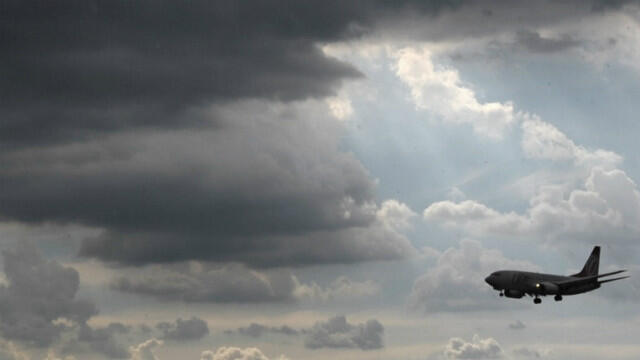The dilemma of global warming, and its direct association with human activities that emit greenhouse gases, has been existing over the past century. We have been on familiar terms with the effects of global climate change from melting of ice and rising in sea levels, to extreme weather events and ocean acidification, and all the various outcomes of such events on plants, animals and humans. But have you ever thought about how global warming affects your flights? Next time you are in a plane, make sure to fasten your seatbelts since the incidence of turbulence is increasing and transatlantic flights are becoming bumpier.
The Two-Way Relationship between Global Warming and Turbulence
The impact of aircrafts on global warming has been well documented, as a result of the emanated gases from the burning of the jets’ fuel, where the aviation industry is considered to be the leading emitter of carbon dioxide (CO2). Yet, according to a study performed by Dr. Paul Williams, an atmospheric scientist at the University of Reading, this interaction is collaborative, and climate change has many consequences on flights. Therefore, the airlines are now falling victims to the climate change that they contributed to, and Justin Timberlake proves to be right with his Grammy Award winning song released in 2006, “what goes around, comes all the way back around.”
Turbulence is a disturbance in the flow of air which is caused by mountains and man-made structures at low altitudes, while at higher ones it is caused by weather conditions as a result of pressure differentials. It is of the essence to note that atmospheric winds and temperatures at levels where planes fly are very strongly related to each other; so, in other words the winds change in response to the changes in temperatures. “When we think of global warming we’re usually thinking about the fact that it’s getting warmer at ground level, but in fact the temperatures are changing higher up in the atmosphere including where planes fly at 35,000ft,” said Dr. Williams. Therefore, this explains the direct consequence of global warming on flights.
In his study, Dr. Williams proved that global warming is escalating jet stream winds and turbulence, which will in turn result in an increase in the time of the flights and consequently the charges paid by travelers and carbon dioxide released in the air. It was mentioned in his report that aircrafts on transatlantic routes were collectively projected to be airborne for an extra 2,000 hours a year, while burning an extra 7.2 million gallons of jet fuel and emitting an extra 70 million kilograms of carbon dioxide.
Furthermore, Dr. Williams added:”Any increase in turbulence would make flying more uncomfortable and increase the risk to passengers and crew. Re-routing flights to avoid stronger patches of turbulence could increase fuel consumption and emissions of atmospheric pollutants, make delays at airports more common, and ultimately push up ticket prices.”
Turbulence: Is it really happening?
Scientists have warned from the increase in the incidents of severe air turbulence as a consequence of the climate change. In August a United Airlines flight from Texas to London was forced to make an emergency landing at Shannon Airport in Ireland after severe turbulence left 16 passengers needing hospital treatment. Also, in June a Malaysia Airlines flight from London to Kuala Lumpur was hit by turbulence as it flew over the Bay of Bengal and as a result many passengers were injured.
Turbulence is the most common cause of injury to air passengers, and in United States alone there are around 58 injuries annually because of turbulence during flights. Also, according to the US Federal Aviation Administration, the number of injuries from turbulence doubled between 1982 and 2003, and the acquired numbers included adjustments made for the rise in the number of flights.
Unfortunately, there is not much that pilots can do to avoid bumps in the skies during flights, this is because Clear Air Turbulence (CAT) is not visible to the naked eye or detectable on radar, and it cannot be accurately forecasted. The British Airways captain, Steve Allright said that “In the main we rely on reports from other aircraft, which we hear either directly or which are passed on by air traffic control. We then consider the options available to us.” He also added that, “Our endeavors to fly at an altitude that has been reported as smooth may be prevented by several constraints such as another aircraft occupying that level, or the weight of the aircraft at that time.” However, despite of all the conditions, pilots, just like passengers, thrive for a smooth ride and will always find the most comfortable and safe paths for all destinations.











